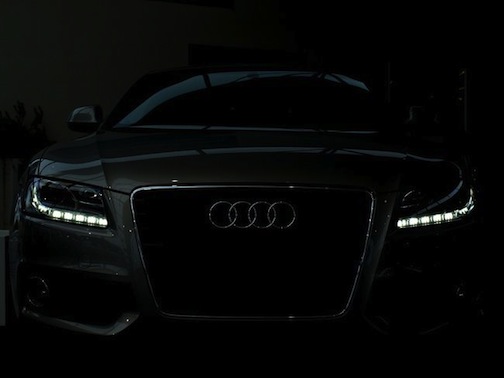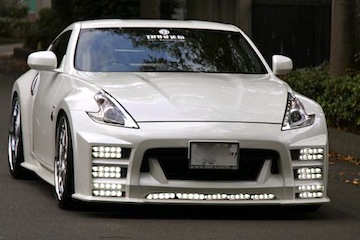LEDs: Lights of the Future or Just Another Driving Distraction?
Posted on Mar 15, 2017 in Safety | 1 comment

The image that started the LED revolution
Audi changed the automotive world.
It didn’t do it with a revolutionary new engine or by using a new lighter-than-steel chassis. It did it with light. A glaring, menacing light that etched its way into our psyches after emerging from a darkened room on an Audi R8.
From the instant those LED strips lit up, the personality of Audi changed forever. It took on a new cool arrogance while spawning imitations from almost all other automakers. The swoopy LEDs make an approaching Audi instantly recognizable, but not everyone is a fan of the bright automotive bling.
My wife, for one, curses when she sees the LED strips at night, saying they hurt her eyes and distract her from the road. LEDs, though, are only going to become more common on cars. Already, the light-emitting diodes are in use on the front and rear of cars ranging from the new Ford Explorer to the 2011 Dodge Charger, where the lights create a signature look in the car’s full-width taillights.
Even the latest Kia Soul, a trendy but low-cost vehicle, comes standard with LED daytime running lamps and taillights. Designers love the lights, because they offer the freedom to convert plain-looking headlights into innovative fashion statements. They have a safety benefit, too, being brighter and faster to turn on than conventional incandescent lighting.

Even the aftermarket wants a piece of the action, offering kits to install LED running lights on older cars. I don’t recommend going that route, because I’ve yet to see DIY LED lights look good, especially when hastily installed on cars obviously built before the LED era.
Full LED headlights aren’t too far away. The Audi R8, the trendsetter for LED running lights, already offers them, and others won’t be far behind.
A traditional halogen bulb generates light from a heated tungsten filament, converting only 5% of the energy used into light. Xenon bulbs are more efficient, as light is generated when electricity is arced within xenon gas, but the blue light emitted from such bulbs has not been well-accepted. A white LED’s light spectrum is much closer to natural sunlight.
LEDs generate light when electricity is passed through a diode that is made from a silicon chip. Because they do not generate light from heat, LEDs are far more efficient than halogen bulbs and last about 10 times longer.
The only thing keeping LED headlamps from mass production is the cost, but we saw how quickly the price of daytime running lights came down to Kia levels, so like them or not, LEDs are not going away.





LED’s are perhaps the most fundamental improvement in lighting since the flourescent bulb was developed. As you note, they are much more efficient at producing light from electricity, and given that a large percentage of the power generated on a car is to operate lights, they can reduce power consumption. For some reason, 43 volt systems never caught on, so cars are stuck with 12 volt DC electrical systems that are pressed by the high current levels demanded by lights, entertainment and electric motors (windows, seats, HVAC). Big current demands heavy copper wires. Just switching over to all-LED lighting on a car can trim more than 100 pounds off a car’s weight with less and smaller gauge wire, smaller battery, smaller alternator and even the lamps are smaller and lighter. As LED lighting production volumes pick up, we will hit the critical mass when prices start to plummet, and I think in another ten or twenty years incandescent lighting will be a thing of the past.